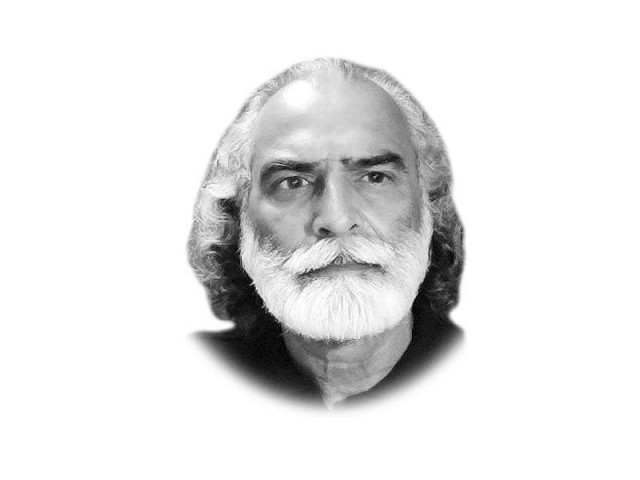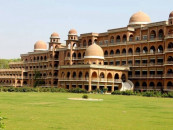Fostering the culture of risk reduction
Inclusive communities are cohesive, vocal, confident, resilient and less vulnerable to hazards and to the powerful

The writer works with Pattan Development Organisation which has been working with disaster prone communities since 1992. He can be reached at bari@pattan.org
Pattan just completed a nationwide study on risk profiling, inclusive governance and enabling the environment for resilience building. We gathered the perspective of disaster-prone communities, local governments and CSOs. We will take the findings back to the communities for validation and then conduct action planning at the local level. The national report will also be shared with higher authorities, experts and media. The same exercise is being done in more than 50 countries. A global report will be prepared and used for advocacy. As far as the state of inclusive governance on disaster is concerned, most respondents said — “not at all”.
Despite the continuity of civilian rule since 2008, passage of the 18th Amendment and establishment of local councils, citizens’ participation in public policy remains an illusion. Most participants of the study blamed poor governance, official corruption and political interference for their exclusion from consultative structures and involvement in disaster reduction planning and implementation, thereby confirming the assessments of a paper authored by Sirajul Haq, “Public Policy Process in Pakistan: Key Causes of Public Policies Failures”. He argues that “massive corruption… lack of vision, poor monitoring system, poor policy evaluations and centralized approach in policy implementation and frequent political interventions as main causes of policy failure.”
Moreover, the centuries old client-patron model is still fancied by the civil bureaucracy and appears to be the main factor of communities’ exclusion from public policy debate and formulation. Sadly, mainstream political parties rely on factional leaders (patrons) for vote catching. They also discourage outsiders from working with their communities directly. Over 27 years of my work with disaster-prone communities, I have faced resistance from local patrons. Some Indian scholars find a connection between corruption and factional leaders as most local development takes place with their consent. The issue of ghost schools in Pakistan is an appropriate example here.
So, what is to be done? The PTI government has created a ray of hope through the new Punjab Village Panchayats and Neighbourhood Councils Act 2019. Under Chapter II of the act, establishment of Common Assembly (CA) in each village and neighbourhood is mandatory. Every resident shall be its member and one-twentieth of the residents can call an extraordinary meeting of the CA while at least two meetings shall be held in one calendar year. The CA could ask “the government or local government in relation to any common need of the residents” through its chairperson. Though it is likely that most local patrons will capture the position of the chairperson of Panchayat councils and try to continue old practices, the law has created room for civil society to make local governance inclusive.
More inclusive communities are highly cohesive, vocal, confident, and resilient and less vulnerable to hazards and to the powerful. Also, it is easy to instil transparency at the community level because of close geographical and social proximity. As mentioned, the [external] civil society must act as a catalyst to neutralise the unbridled power of local patrons and to unleash the potential of local communities, including those marginalised through exclusion and segregation. We must not miss this opportunity.
This should be the first step towards creating a culture of risk reduction. Broadly, “culture is the way of life of particular groups of people. It includes how group thinks, says and makes — its systems, attitudes and feelings. Culture is learned and transmitted from generation to generation.” However, culture remains dynamic and fluid. It could change with time and development. But our attitude towards risks has not. Most of us still ignore obvious risks and hazards. The fatalist attitude — “risk will not harm me” must be turned into — “I am vulnerable, hence must be aware of obvious and hidden risks”.
Secondly, all everyday disasters must be recorded; their accumulative impact analysed and made public.
Thirdly, in order to build risk sensitivity amongst the youth, textbooks should contain the history of disasters and students must be involved in risk identification, drills and disaster preparedness. Artists, singers, and poets can play an important role in sensitising the public about risks. A strict enforcement of safety measures must be ensured, and a close cooperation between academia and policymakers must be strengthened on disaster risk reduction (DRR).
Above all, leaders of political parties must be motivated to make DRR an integral part of manifestos. In short, spending a single rupee and minute on DRR will save thousands of rupees and hours on recovery. Both, government bodies and NGOs, have been doing some of these activities. But most are inconsistent therefore, not impactful.
Recently, I presented Pattan’s case study in the International Forum on Telling Live Lessons from Disasters, which was held to commemorate the 25th anniversary of the Kobe earthquake. On January 17, 1995, an earthquake of 6.9 magnitude hit Kobe, killing more than 6,000, injuring 25,000 and displacing 300,000. It caused $132 billion worth of damages. The Japanese called it the Great Hansin Earthquake. The President of Hyogo Earthquake Memorial, at the conference, said that without building a culture of disaster, losses could not be reduced and this could be achieved by keeping memories of disasters alive.
Fifteen year ago, on October 8, a devastating earthquake of 7.6 magnitude hit Pakistan’s northern areas and Kashmir, killing 90,000 people and leaving 3.5 million homeless due to the collapse of 780,000 buildings. Almost 20,000 schoolchildren lost their lives due to faulty construction. Five years later, we were shaken by yet another disaster — widespread floods. According to the NDMA report, 20 million people were affected, while 1.3 million were rescued. The economic losses were equal to $43 billion. For the next four years, Pakistan suffered from flooding during the monsoon season. While the country slowly recovered from naturally-trigged manmade disasters, terrorism engulfed the nation. Despite, these repeated jolts we could not develop a culture of risk reduction.
Pattan has decided to commemorate the earthquake’s 15th anniversary by holding various events, involving civil society organisations, youth, journalists, academics, artists and government institutions and political leadership in a week-long ceremony. Please block the date and be ready to contribute to creating the culture of DRR in Pakistan.
Published in The Express Tribune, February 18th, 2020.
Like Opinion & Editorial on Facebook, follow @ETOpEd on Twitter to receive all updates on all our daily pieces.















COMMENTS
Comments are moderated and generally will be posted if they are on-topic and not abusive.
For more information, please see our Comments FAQ